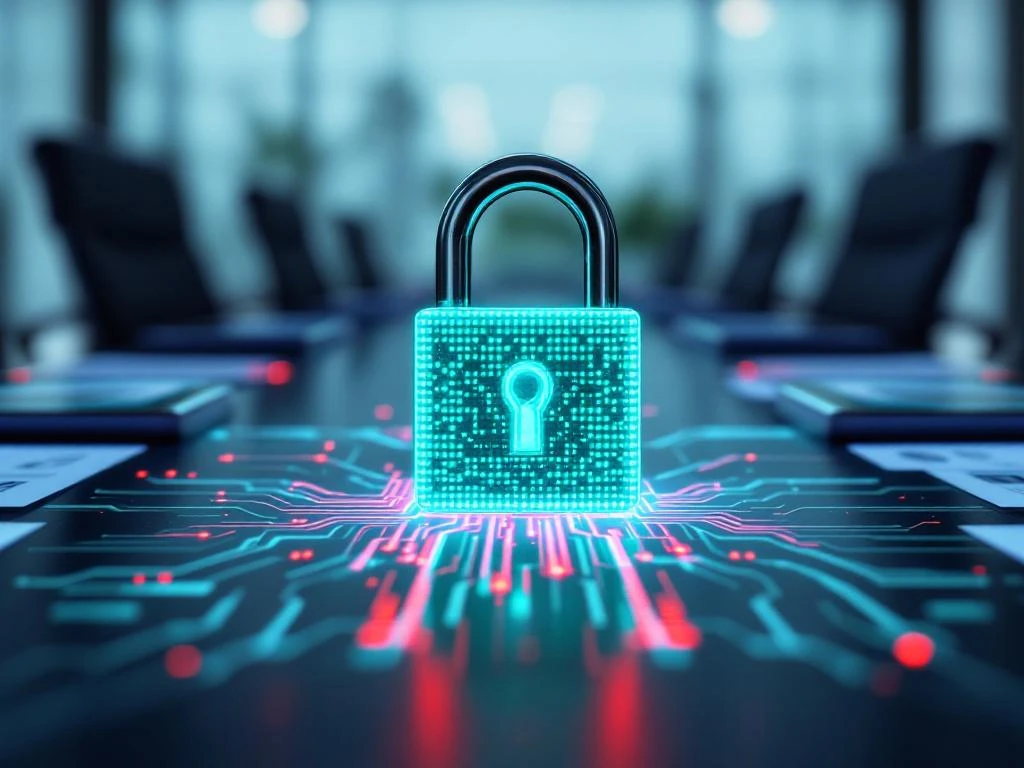

-
UK: +44 203 8876 770
US: 315 508 6500 - cybersecurity@thisisiceberg.com
-
8 Devonshire Square, London, EC2M 4YJ

Identifying leadership potential in cybersecurity candidates requires a structured approach focusing on both technical expertise and leadership competencies. Effective assessment involves evaluating decision-making abilities under pressure, communication skills during security incidents, and strategic thinking for threat prevention. By incorporating behavioral questions, scenario-based assessments, and technical problem-solving exercises, interviewers can gain comprehensive insights into a candidate’s ability to lead cybersecurity teams through complex challenges and evolving threats while maintaining strong ethical standards in data-sensitive environments.
When evaluating leadership capabilities in cybersecurity candidates, we focus on specific indicators that predict success in security leadership roles. Beyond technical prowess, look for candidates who demonstrate strategic thinking and can articulate how security aligns with business objectives. Assess their communication abilities—particularly how they explain complex security concepts to non-technical stakeholders. Their incident response philosophy reveals critical insights: do they emphasize preparation, clear communication protocols, and learning from incidents?
Leadership assessment should examine candidates’ experience building and mentoring security teams. Ask for examples of how they’ve developed team members’ capabilities or managed challenging team dynamics. Evaluate their decision-making process, especially under pressure or with incomplete information—a common scenario in cybersecurity crises.
At Iceberg, we’ve found that structured behavioral interviews combined with situational scenarios yield the most comprehensive insights into leadership potential. While past behavior doesn’t guarantee future performance, it provides meaningful data points that help predict how candidates will handle leadership challenges in your organization’s unique cybersecurity environment.
Effective cybersecurity leaders must excel at decision-making under extreme pressure. When facing active threats, leaders need to quickly assess situations, prioritize responses, and make confident decisions despite incomplete information. This requires both technical understanding and the ability to remain calm under pressure—qualities that separate exceptional cybersecurity leaders from merely competent ones.
Communication excellence during security incidents is non-negotiable. Top cybersecurity leaders can translate complex technical situations into clear, actionable information for both technical teams and executive stakeholders. They must coordinate response efforts across departments, provide transparent updates, and manage the delicate balance of information sharing during crises.
Strategic thinking for threat prevention distinguishes visionary cybersecurity leaders. Rather than merely reacting to threats, they anticipate emerging risks, develop proactive defense strategies, and align security initiatives with business objectives. This forward-thinking approach requires deep industry knowledge and the ability to see connections between seemingly unrelated developments in the threat landscape.
Adaptability to evolving threats has become increasingly critical in today’s rapidly changing security environment. The most effective leaders demonstrate intellectual curiosity, embrace continuous learning, and can pivot strategies quickly as new threats emerge. They build teams and systems designed for resilience rather than rigid compliance.
Ethical leadership takes on heightened importance in environments handling sensitive data. Beyond technical controls, security leaders must establish and model a culture of ethical behavior, transparency, and accountability. They should demonstrate unwavering commitment to privacy principles, regulatory compliance, and responsible security practices.
When assessing cybersecurity leadership capabilities, behavioral questions that probe past experiences often yield the most insightful responses. Consider asking: “Describe a time when you had to lead a response to a security incident. What was your approach, and how did you coordinate the team’s efforts?” This reveals their incident management style, communication under pressure, and ability to orchestrate complex technical responses.
Situational questions help evaluate decision-making processes: “How would you handle a situation where your team discovers a critical vulnerability in a production system just before a major product launch?” Their response illuminates their ability to balance security imperatives with business objectives—a crucial skill for effective cybersecurity leadership.
Team leadership scenarios provide windows into management philosophy: “Tell me about how you’ve developed technical talent on your team. How do you identify potential and nurture growth?” This question reveals whether they view leadership as a technical activity or a people development function—or ideally, both.
Strategic thinking can be assessed through questions like: “How do you stay ahead of emerging threats in our industry, and how have you translated that knowledge into actionable security improvements?” Look for candidates who demonstrate proactive threat intelligence gathering and the ability to implement practical defensive measures.
Questions about navigating organizational politics often reveal leadership maturity: “Describe a situation where you needed to gain buy-in for a critical security initiative that required significant resources. How did you approach it?” This highlights their influence skills and organizational savvy—essential for security leaders who must advocate for investments in an often-invisible function.
The relationship between technical expertise and leadership capabilities shifts dramatically across the cybersecurity career spectrum. For entry-level positions, technical proficiency naturally dominates, with leadership expectations limited to self-management and collaboration. As professionals advance into mid-level roles, leadership components grow significantly while technical depth remains crucial.
For senior cybersecurity positions, the balance reaches an inflection point where leadership capabilities often become the primary differentiator between candidates. However, unlike some disciplines where executives can succeed with minimal technical knowledge, cybersecurity leaders must maintain substantial technical understanding to make informed strategic decisions and effectively evaluate team recommendations.
When assessing candidates for leadership positions, consider your organizational structure and security maturity. Organizations with well-developed security functions may prioritize candidates with stronger strategic and leadership competencies, while organizations building security capabilities might need leaders with greater technical depth who can provide hands-on guidance.
The most effective cybersecurity leaders demonstrate “T-shaped” skills—broad leadership capabilities with deep technical expertise in specific areas. This combination enables them to understand the full security landscape while making sound judgments about specialized issues. During interviews, look for candidates who can discuss both technical concepts and leadership philosophies with equal fluency.
At Iceberg, we help organizations evaluate this critical balance based on their specific needs. Our recruitment support services ensure you find candidates with the optimal mix of technical expertise and leadership potential for your specific organizational context.
Scenario-based assessments provide powerful insights into how candidates approach complex cybersecurity challenges. Tabletop exercises that simulate security incidents allow you to observe candidates’ thinking processes, communication styles, and decision-making under pressure. Present a scenario—like a detected data breach or ransomware attack—and ask them to walk through their response approach, paying attention to how they balance technical, business, and communication considerations.
Incident response simulations take this concept further by introducing time pressure and evolving information. Start with basic details about a security event, then gradually reveal new information that changes the situation. Top leadership candidates will demonstrate adaptability, clear prioritization, and thoughtful delegation even as circumstances shift rapidly.
Team collaboration scenarios help evaluate how candidates work with diverse stakeholders. Present a situation requiring coordination between security, IT operations, legal, and executive teams. Ask candidates to explain their approach to building consensus, managing conflicting priorities, and driving resolution.
For technical leadership roles, include scenarios that blend strategic and tactical elements. For instance, ask how they would approach implementing zero-trust architecture while maintaining business operations and managing limited resources. This reveals their ability to connect security strategy with practical implementation challenges.
When designing scenario-based assessments, ensure they reflect realistic challenges in your environment. The goal isn’t to test textbook knowledge but to observe how candidates apply their expertise to situations they’ll likely face in your organization.
Watch for candidates who struggle to communicate technical concepts clearly to non-specialists. Effective cybersecurity leaders must translate complex security issues into business-relevant terms. If candidates resort to excessive jargon or seem impatient when explaining technical matters during interviews, they’ll likely struggle when briefing executives or non-technical teams during actual security incidents.
Reluctance to acknowledge past mistakes represents another significant warning sign. Cybersecurity involves inherent uncertainty and occasional failures. Leaders who can’t discuss lessons learned from past missteps typically lack the self-awareness and resilience necessary for continuous improvement in the security field.
Candidates who emphasize technical solutions while dismissing people and process factors often make poor security leaders. Security effectiveness depends heavily on user behavior, organizational culture, and cross-functional collaboration. Leaders fixated exclusively on technical controls typically struggle to build sustainable security programs.
Be wary of those who display rigid thinking or resistance to new approaches. The cybersecurity landscape evolves constantly, requiring leaders who can adapt strategies as threats and technologies change. Candidates who speak dogmatically about “the right way” to approach security challenges may lack the flexibility needed for long-term effectiveness.
Developing a structured assessment approach ensures consistent evaluation across cybersecurity leadership candidates. Start by creating detailed rubrics that define expected leadership competencies at different organizational levels. These should include both universal leadership qualities and cybersecurity-specific capabilities, with clear examples of what constitutes basic, proficient, and exceptional performance in each area.
Implement multi-interviewer coordination to gain diverse perspectives on candidates. Assign specific competencies to different interviewers based on their expertise and position. For example, technical leaders might focus on security knowledge and strategic thinking, while executives evaluate communication skills and business alignment. This approach minimizes individual biases and creates a more comprehensive assessment.
Develop leadership competency matrices specifically for cybersecurity roles at your organization. These should reflect your security program’s maturity, technical environment, and organizational culture. The most effective matrices evolve over time, incorporating lessons from both successful and unsuccessful hires to continuously refine your selection criteria.
Establish consistent post-interview assessment methodologies where interviewers independently document observations before sharing conclusions. This prevents groupthink and ensures all perspectives are considered. Creating standardized scoring tools facilitates meaningful comparisons between candidates and helps identify areas for deeper exploration in follow-up conversations.
Finally, don’t overlook the importance of recruiting cybersecurity talent effectively in a competitive market. The strongest leadership assessment framework proves worthless if you can’t attract qualified candidates. Partner with specialized firms like Iceberg who understand the unique challenges of cybersecurity recruitment and can help you connect with candidates possessing both technical expertise and leadership potential.













